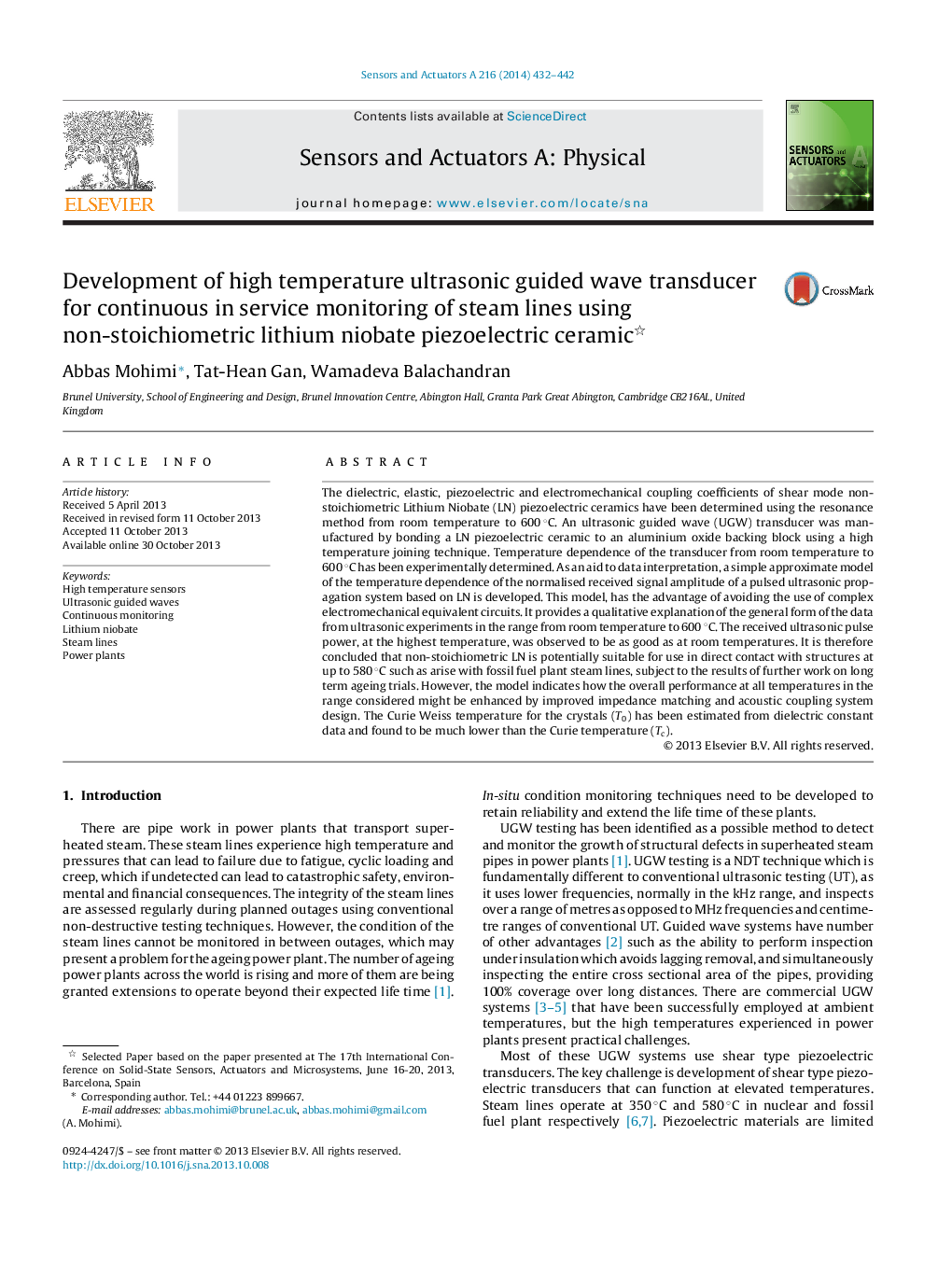| کد مقاله | کد نشریه | سال انتشار | مقاله انگلیسی | نسخه تمام متن |
|---|---|---|---|---|
| 737065 | 1461884 | 2014 | 11 صفحه PDF | دانلود رایگان |

• Impedance measurements of shear mode Lithium Niobate samples were performed up to 600 °C.
• The dielectric, elastic, piezoelectric and electromechanical coupling coefficients are presented.
• Curie Weiss temperature was estimated from the dielectric constant data.
• Lithium Niobate was used to produce an Ultrasonic guided wave transducer.
• The transducer was shown to work at up to 600 °C.
The dielectric, elastic, piezoelectric and electromechanical coupling coefficients of shear mode non-stoichiometric Lithium Niobate (LN) piezoelectric ceramics have been determined using the resonance method from room temperature to 600 °C. An ultrasonic guided wave (UGW) transducer was manufactured by bonding a LN piezoelectric ceramic to an aluminium oxide backing block using a high temperature joining technique. Temperature dependence of the transducer from room temperature to 600 °C has been experimentally determined. As an aid to data interpretation, a simple approximate model of the temperature dependence of the normalised received signal amplitude of a pulsed ultrasonic propagation system based on LN is developed. This model, has the advantage of avoiding the use of complex electromechanical equivalent circuits. It provides a qualitative explanation of the general form of the data from ultrasonic experiments in the range from room temperature to 600 °C. The received ultrasonic pulse power, at the highest temperature, was observed to be as good as at room temperatures. It is therefore concluded that non-stoichiometric LN is potentially suitable for use in direct contact with structures at up to 580 °C such as arise with fossil fuel plant steam lines, subject to the results of further work on long term ageing trials. However, the model indicates how the overall performance at all temperatures in the range considered might be enhanced by improved impedance matching and acoustic coupling system design. The Curie Weiss temperature for the crystals (T0) has been estimated from dielectric constant data and found to be much lower than the Curie temperature (Tc).
Journal: Sensors and Actuators A: Physical - Volume 216, 1 September 2014, Pages 432–442